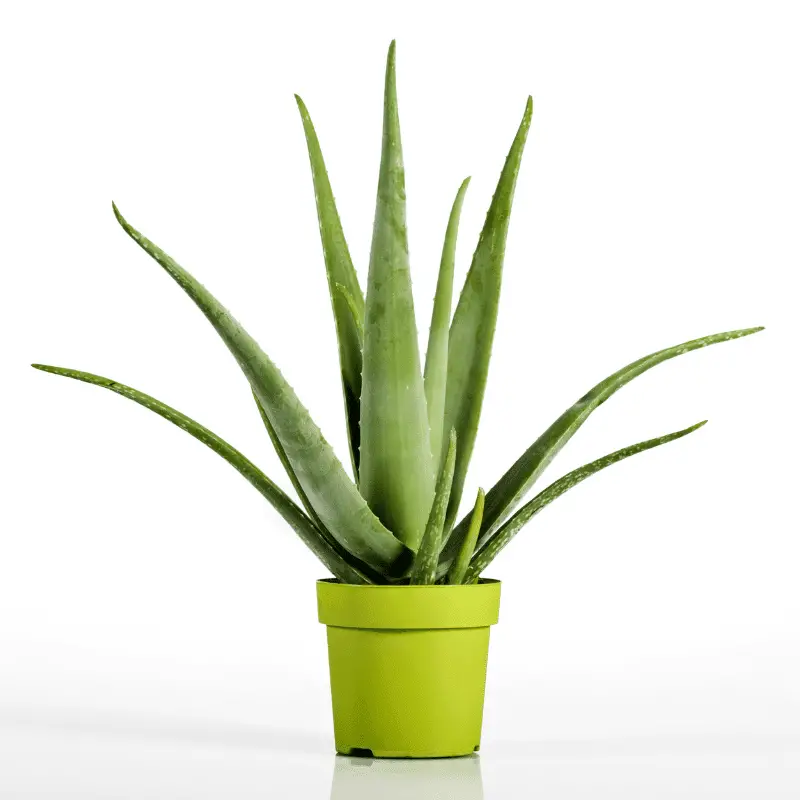Aloe Vera is a plant that has been used to help heal human skin heal for centuries. But can dogs benefit from using Aloe Vera as we do? Let’s find out!
Aloe Vera can effectively treat skin problems like minor cuts, flea bites, sunburn, insect bites, and dog rashes. Aloe Vera is safe for dogs in its natural gel form, but only if applied correctly. Here are the best practices for using Aloe Vera on dogs.
About Aloe Vera
Aloe Vera is a green succulent plant from the Arabian peninsula. It’s been growing for thousands of years and used for centuries to heal and protect. You can find it growing nowadays in many tropical, semi-tropical arid climates or climate-controlled greenhouses around the globe.
The Aloe plant is unique because it produces its natural compound, which helps soothe burns or other injuries and promotes healthy skin cell growth.
The magic is in the gel between the leaves!
Benefits of Aloe Vera
- Aloe Vera is also a good source of vitamins and minerals, and it has anti-inflammatory and antioxidant properties and skin regeneration.
Never use Aloe Vera in or around your dogs:
- Eyes “In and around”
- Mouth
- Nose
- Inside Ears
You can use Aloe Vera safely on your dogs:
- Base of tail
- Tail
- Legs
- Paws
- Neck
- Head
- Back
- Belly
- Bum
- Outside of ears
- Around the genitals
The amount to use
Clean your hands and put some Aloe Vera gel on your dog’s clean skin. Rub it in gently. You don’t need to soak the wound. If it’s too sore to touch, you can dab it on the area of concern, like a moisturiser.
Perfect for:
- Cat scratches
- Flea bites
- Over itching
- Paw sores
- Paw minor cuts
- Sunburn
- Minor Burns
- Insect bites
- Skin regeneration
Best Way To Keep Your Dog Safe When Applying Aloe Vera Gel
It is essential not to apply Aloe Vera at night or when leaving them alone. It would be best to watch your dog closely if they start licking the area of concern or have an allergic reaction. If this it’s the first time of use, be especially careful.
If you are concerned about your dog licking the area, use a kong cloud or an Elizabethan collar to stop them from reaching the problem area.
If the healing of the skin hasn’t improved in a few days, you should contact your veterinarian and consider getting an alternative cream made for dogs.
What is in pure Aloe Vera gel?
Pure mean’s pure! Pure Aloe Vera gel is taken from within the plant’s leaves and has not been modified, diluted, or added to other ingredients. The packet should read organic/pure or 100% organic Aloe Vera gel.
How to tell if it’s pure Aloe Vera gel?
Pure Aloe Vera gel colour is slightly yellowish. However, it can also be a transparent colour, depending on the harvest time. If the gel you have is green or any other colour other than yellowish or transparent, it is not in its purest form. It would be best not to use this on your dog.
Signs of Aloe Vera Allergies
- Redness
- Itching
- Difficulty in breathing
- Swelling face, tongue and throat
- Diarrhoea
- Vomiting
Aloe Vera Plant At Home

If you have the Aloe Vera plant at home, you can directly apply this gel to your dog’s skin.
Parts of the Alow plant are toxic to a dog. However, the clear, yellowish gel deep inside the leaf isn’t.
You should never orally treat your dog to any part of the Aloe Vera plant yourself.
You should always consult your veterinarian before giving any oral substances to your dog.
The non-toxic gel is found inside the thick leaves but use the correct part.
The gel is the correct part. That is clear-ish yellowish! Do not use the white liquid from the edges. This stuff can be toxic, so avoid it.
If in doubt, buy some pure Aloe Vera instead and don’t use your plant at home to be on the safe side.
My Vote and Conclusion on Using Aloe Vera for Wounds
After accidentally cutting off a part of my finger while cutting a cable tie off my puppy’s stairgate, I used pure Aloe Vera gel on the wound during the healing process. It had a natural healing ability and didn’t cause irritation, dryness, or stickiness. When using Aloe Vera on your dog, it’s essential to use pure gel that hasn’t been diluted with other products that could be toxic and to apply it only to the recommended areas. If you’re unsure, it’s always best to consult your vet, who may have a more suitable product for your dog’s needs.
Happy Dog Parenting!
